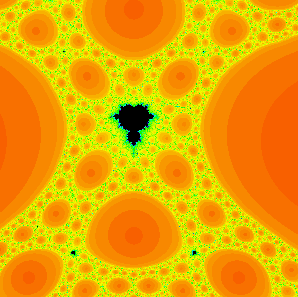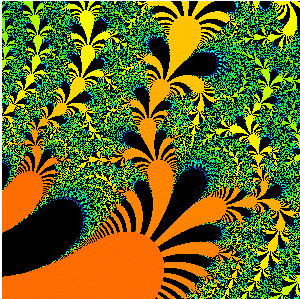 |
 |
Time and Location: Wednesday 2:00--2:50pm, Jones Hall 307
Webpage: http://jxshix.people.wm.edu/Math-410-2010/index.html (The "discussion board" function on Blackboard website will also be used)
Purpose
and Goals: The purpose of this one credit Math
410 course is to introduce students to possible undergraduate research
projects in computational mathematics at William and Mary. The
format will consist mainly of weekly talks by faculty (approximately 30
minutes) followed by class discussions and/or exercises related to the
presented topics. The typical student in this course will be in
his or her sophomore or junior year and will have an interest in
pursuing a research project related to computational mathematics.
For many, this course can serve as a gateway to establishing a research
project through the CSUMS
program, with applications for this program due at the end of the
spring semester. If you have any questions about whether this
course could be appropriate for you, please contact me
or one of the faculty members listed on the CSUMS
website. (Students who have previously taken ``Math
410: Topics in Computational Mathematics'' are welcome to enroll again
this semester. Students may petition the Chair of the
Mathematics Department to have three 1 credit Math 410 courses count as
one 400 level course for the mathematics major.)
Schedule:
| Date |
Title |
Speaker |
Abstract/Reading material |
| Week 1 (1/20) |
organizing meeting questionnaire |
Junping Shi |
How
to be a winner: advices for students starting into research (Andre
DeHon) Advice for undergraduates considering graduate schools (Phil Agre) Does one have to be a genius to do mathematics? (Terry Tao) |
| Week 2 (1/27) |
Some recent honors projects on matrix theory | Chi-Kwong Li |
Abstract: I will describe some recent honors projects of my students. |
| Week 3 (2/3) |
On
predator-prey models |
Junping Shi |
Abstract: I will introduce
predator-prey models from ecological studies, and some related research problems. Some papers: Hastings et.al. 2008 Nature Goldwyn- Goldwyn- |
| Week 4 (2/10) |
cancelled
due to snow |
||
| Week 5 (2/17) |
Multistrain epidemics and spatial inhomogeneity | Leah Shaw |
slides is available on Blackboard
|
| Week 6 (2/24) |
Computational Dynamics and Topology | Sarah Day |
reading
material |
| Week 7 (3/3) |
Discrete
Optimization Problems at NASA Langley Research Center |
Rex
Kincaid |
|
| Week 8 (3/10) |
Spring Break (no class) | ||
| Week 9 (3/17) |
Dynamics of oscillators on random networks | Drew
LaMar |
Abstract: A network of oscillators is an
effective model in the study of neural synchronization.
In this talk, we initially explore the effect of correlations between the in- and out-degrees (i.e. node-degree correlations) of random directed networks on the synchronization of identical pulse-coupled oscillators. We demonstrate a variety of results through numerical experiments, for example networks with negative node-degree correlation are less likely to achieve global synchrony and synchronize more slowly than networks with positive node-degree correlation. We then show how this effect of node-degree correlation on synchronization of pulse-coupled oscillators is consistent with aspects of network topology (e.g., Laplacian eigenvalues, clustering coefficient) that have been shown to affect synchronization in other contexts. Finally, we end with a more in-depth look into the global dynamics on all strongly connected 3-node networks. |
| Week 10 (3/24) |
Applications of Mathematics in Marine Conservation Ecology | Rom Lipcius, William Jordan-Cooley | |
| Week 11 (3/31) |
Vertex Identifying Code in Infinite Hexagon Grid | Gexin Yu | Abstract: Given a graph $G$, an
identifying code $\code\subseteq V(G)$ is a vertex set such that for any two distinct vertices $v_1,v_2\in V(G)$, the sets $N[v_1]\cap\code$ and $N[v_2]\cap\code$ are distinct and nonempty (here $N[v]$ denotes a vertex $v$ and its neighbors). We study the case when $G$ is the infinite hexagonal grid $H$. Cohen et.al. constructed two identifying codes for $H$ with density $3/7$ and proved that any identifying code for $H$ must have density at least $16/39\approx0.410256$. Both their upper and lower bounds were best known until now. Here we prove a lower bound of $12/29\approx0.413793$. |
| Week 12 (4/7) |
Andrew Wilcox | ||
| Week 13 (4/14) |
Distance geometry and biomolecular structure estimation | Michael Lewis | We discuss some applications of
distance geometry in the determination of the structure of proteins and DNA. Distance geometry refers to the characterization of a set of points using information on the distance between the points. Distance geometry can be used to estimate protein structure from lower and upper bounds on interatomic distances determined by nuclear Overhauser effect spectroscopy (NOESY). NOESY data is sparse, however, and more realistic protein structure determination requires the minimization of an empirical energy function. As we discuss, parameterization of the energy function in terms of interatomic distances leads to a more tractable optimization problem. Another application of distance geometry is the Partial Digest Problem. In this problem an enzyme is used to cut a batch of DNA strands at locations known as restriction sites (though not every site need be cut). The resulting mix contains fragments whose lengths correspond to a subset of the distances between restriction sites. The question is then one of reconstructing the original sequence from this distance data. In the talk we will discuss these and other applications, and how they can be attacked using a combination of distance geometry and optimization. The approaches we will discuss result are large-scale, nonconvex optimization problems that involve functions of the eigenvalues of matrices. |
| Week 14 (4/21) |
Ben Holman |
||
| Week 15 (4/28) |
Colloquium
Talks suitable for Undergraduate students: (normally Friday 3-3:50pm, Jones Hall 301)
1. January 29, 3:00 PM, Speaker:
Drew LaMar (College of William and Mary)
2. February 19, 3:00 PM, Speaker:
Bruce Schmeiser (Purdue University)3. March 17, 3:00 PM. Speaker: Boris Zaltzman (Massachusetts Institute of Technology)
4. March 19, 3:00 PM, Speaker: Yiu-Tung Poon (Iowa State University)
5. March 26, 3:00 PM, Speaker: Barry Nelson (Northwestern University)
6.